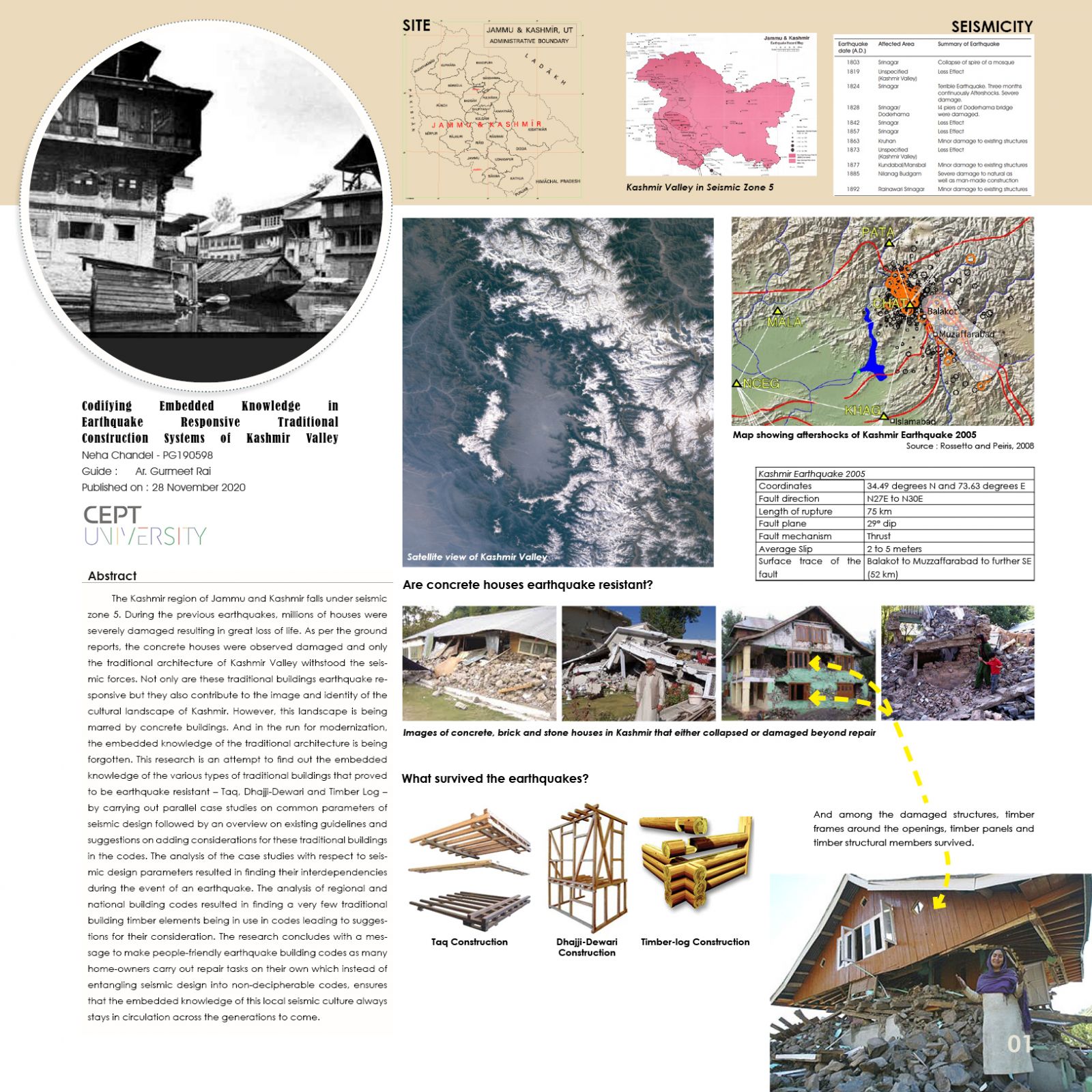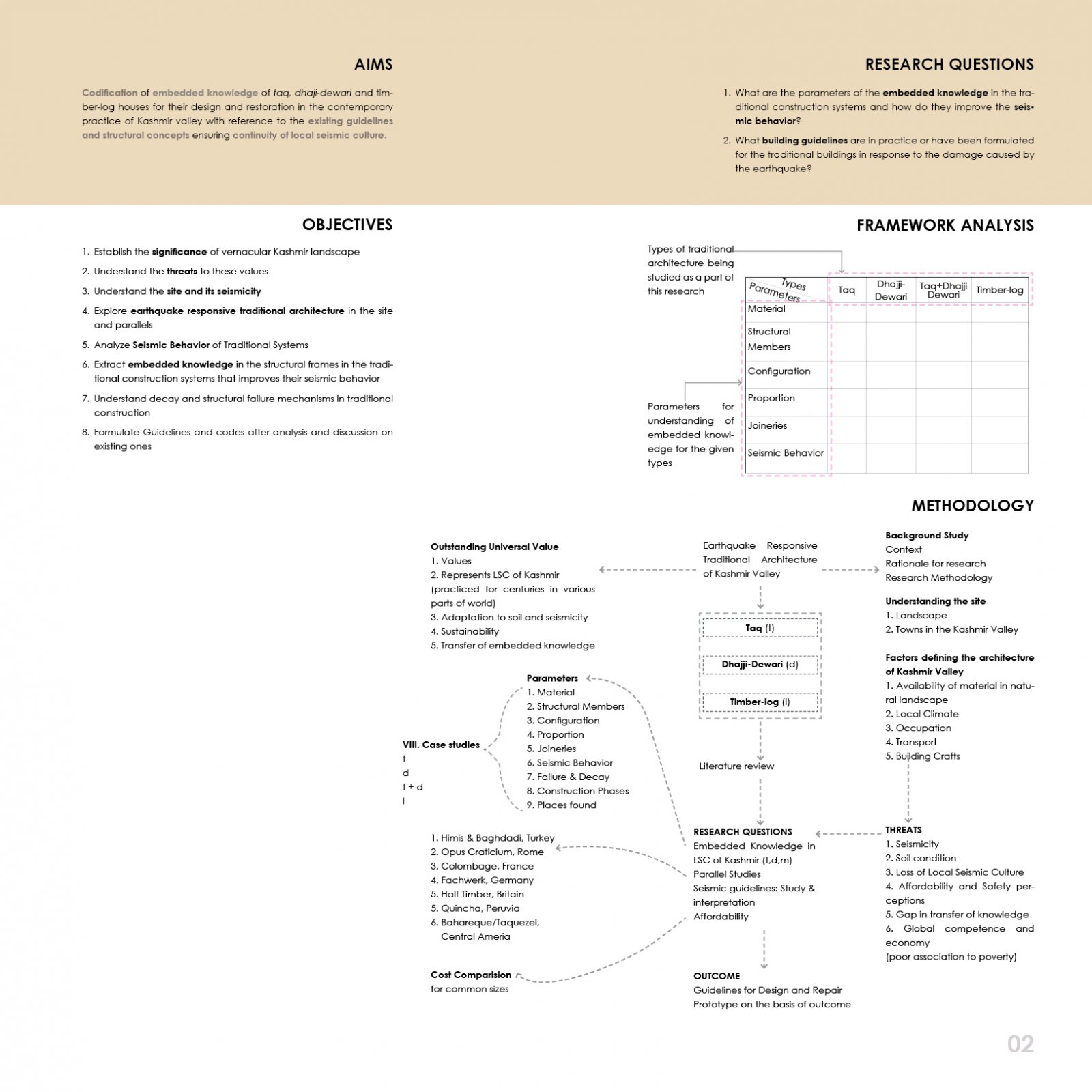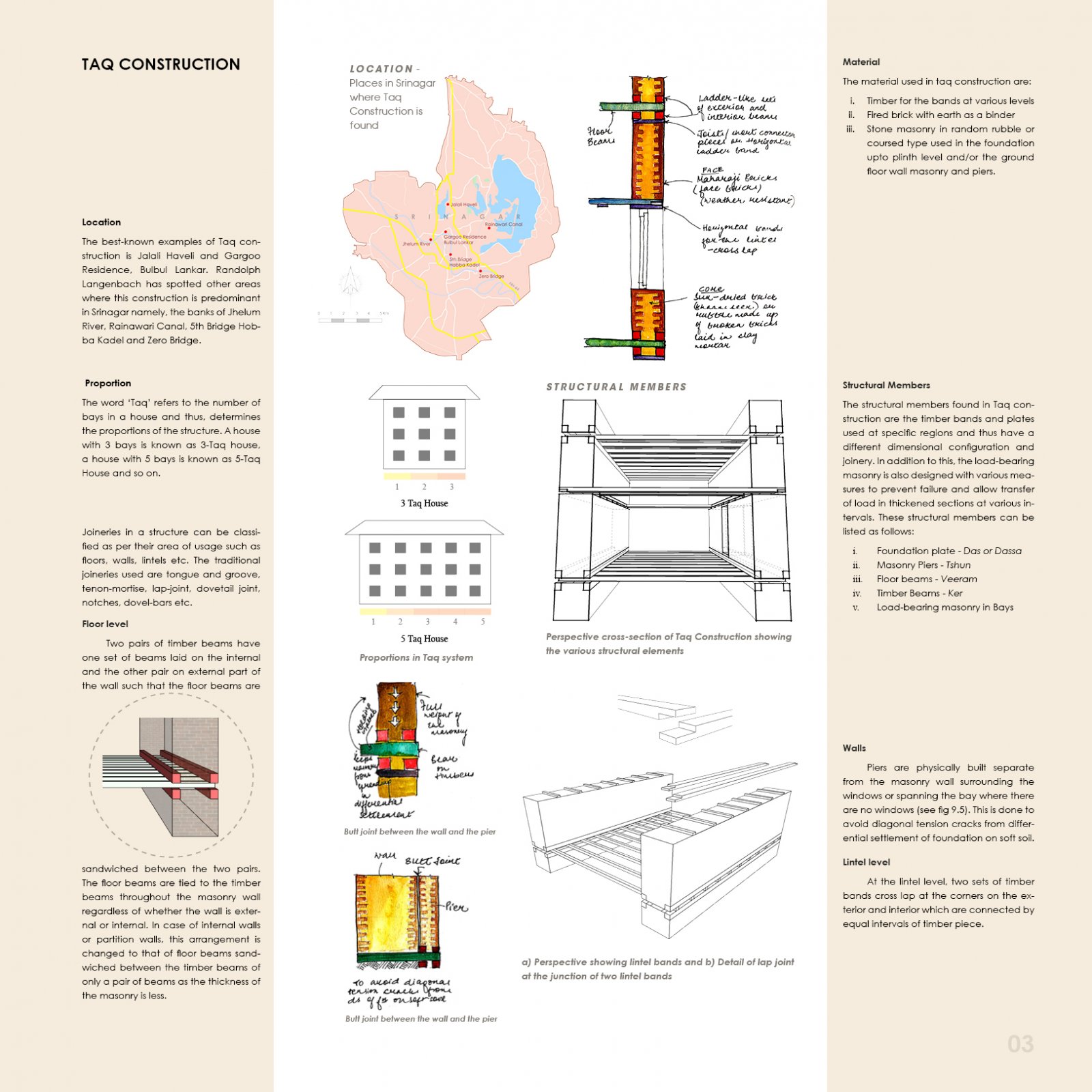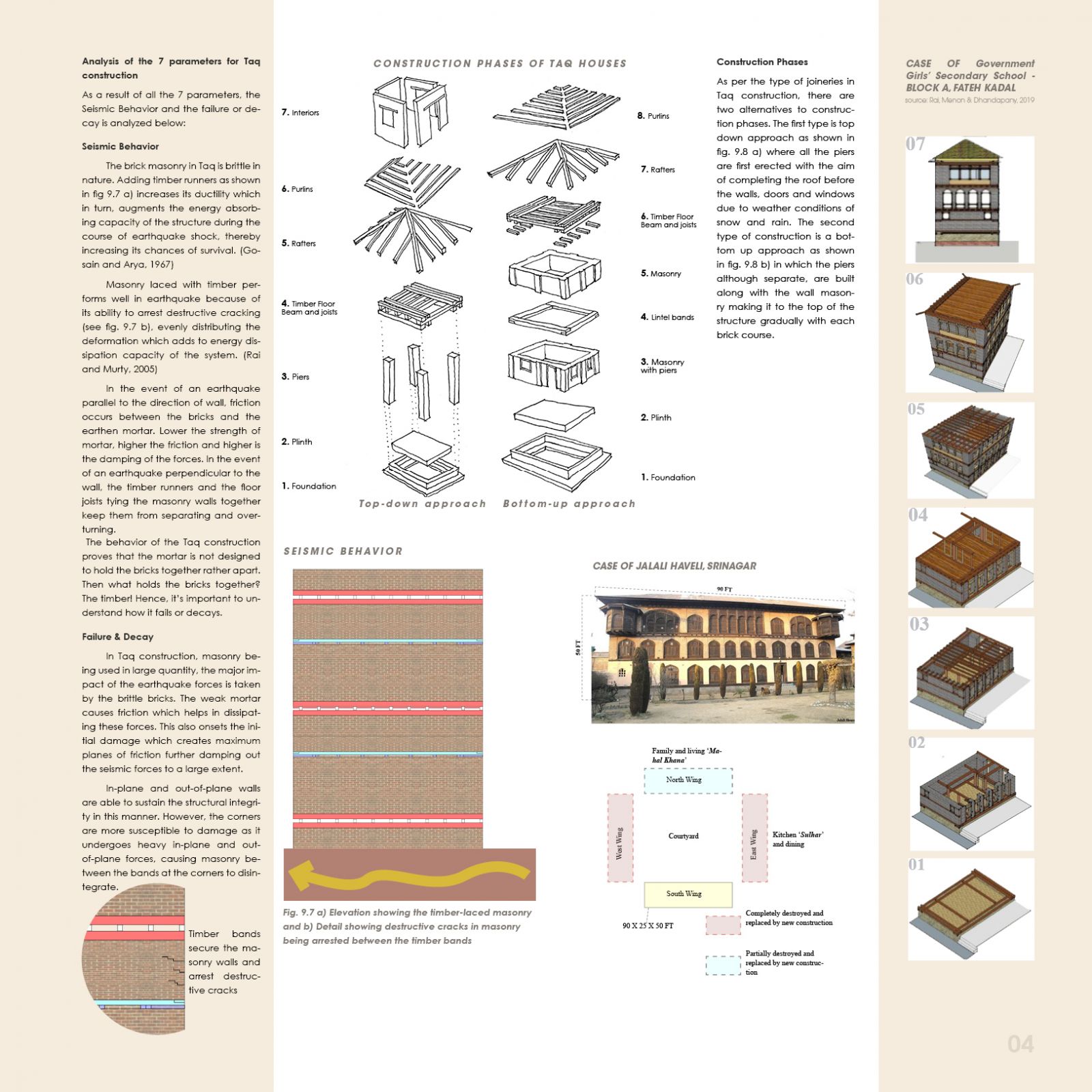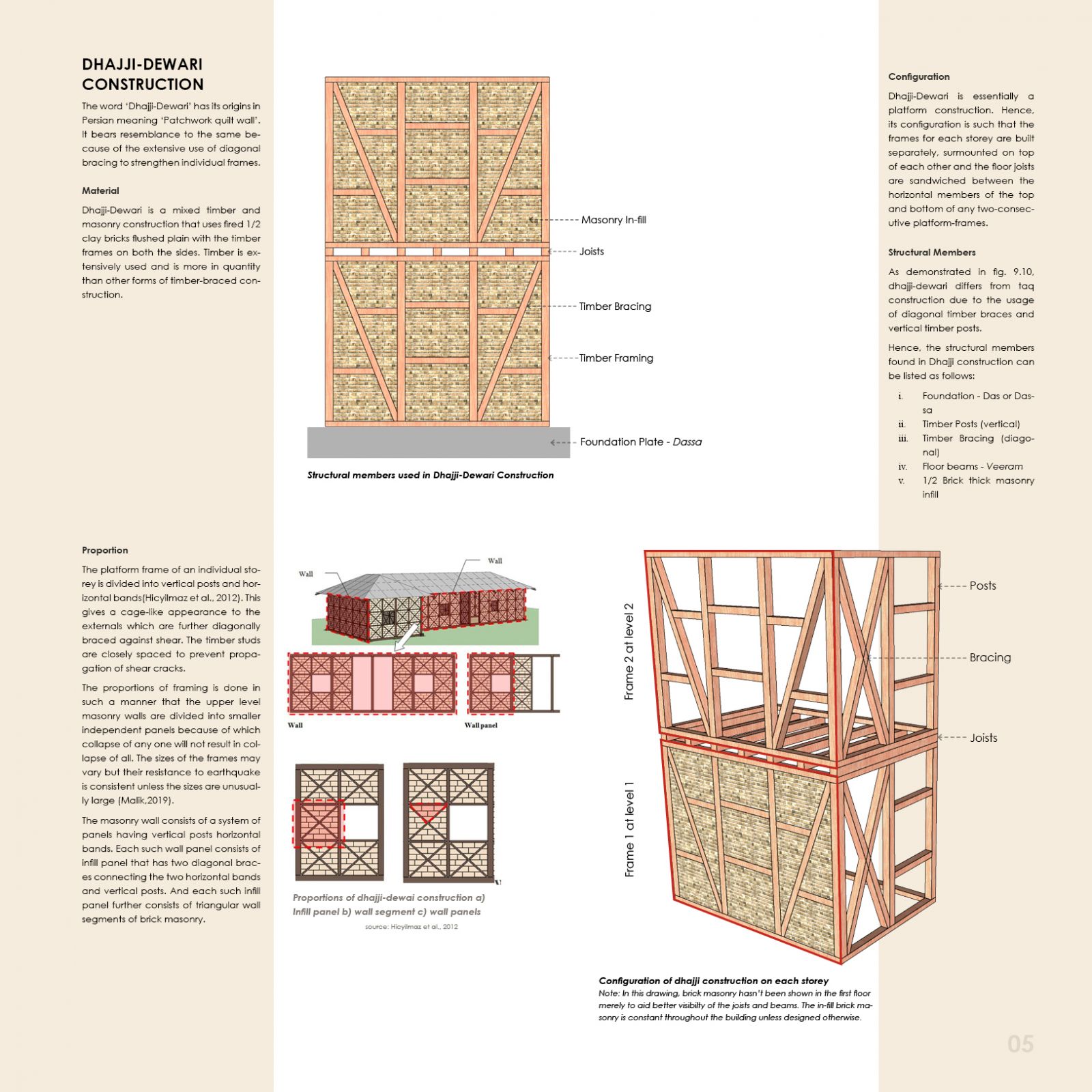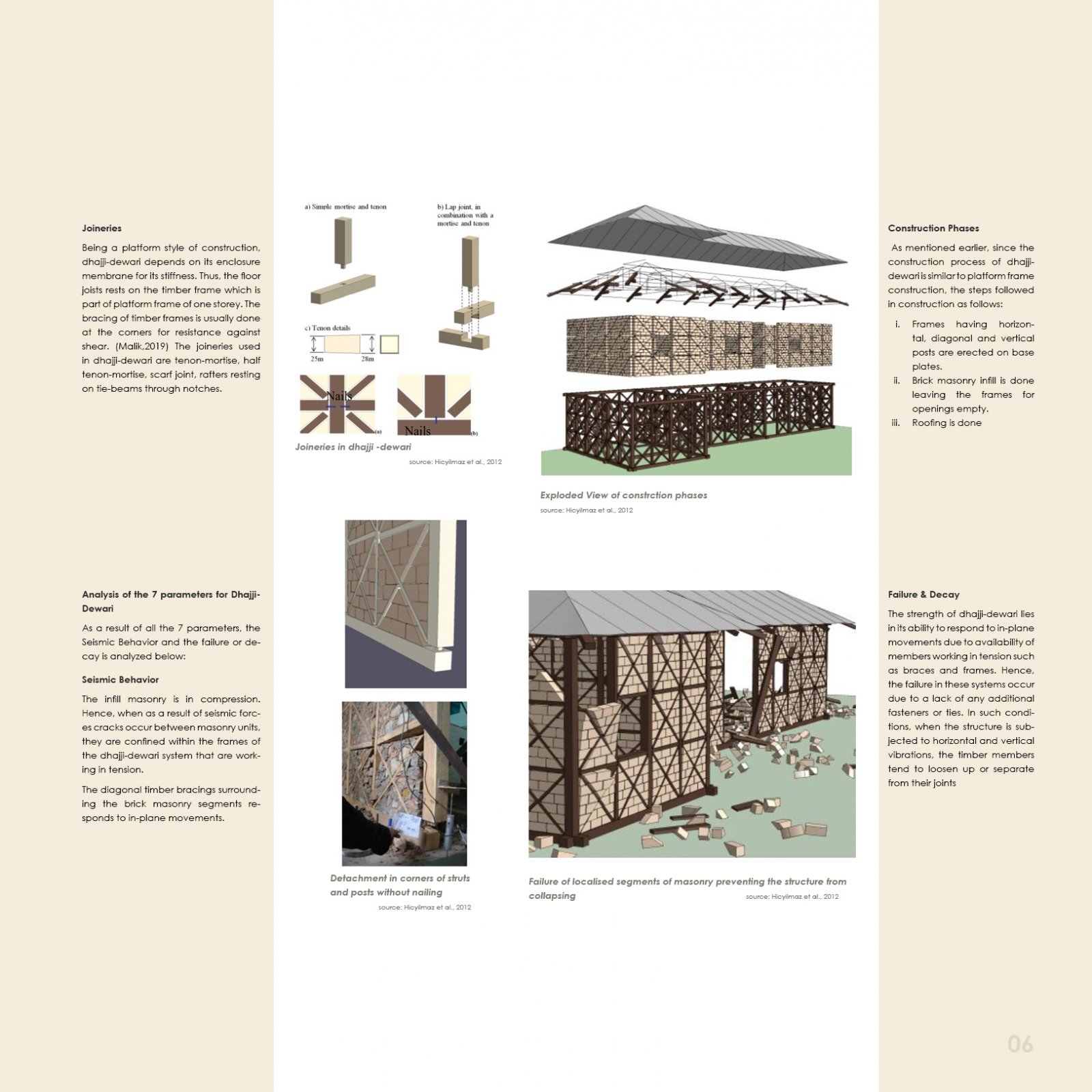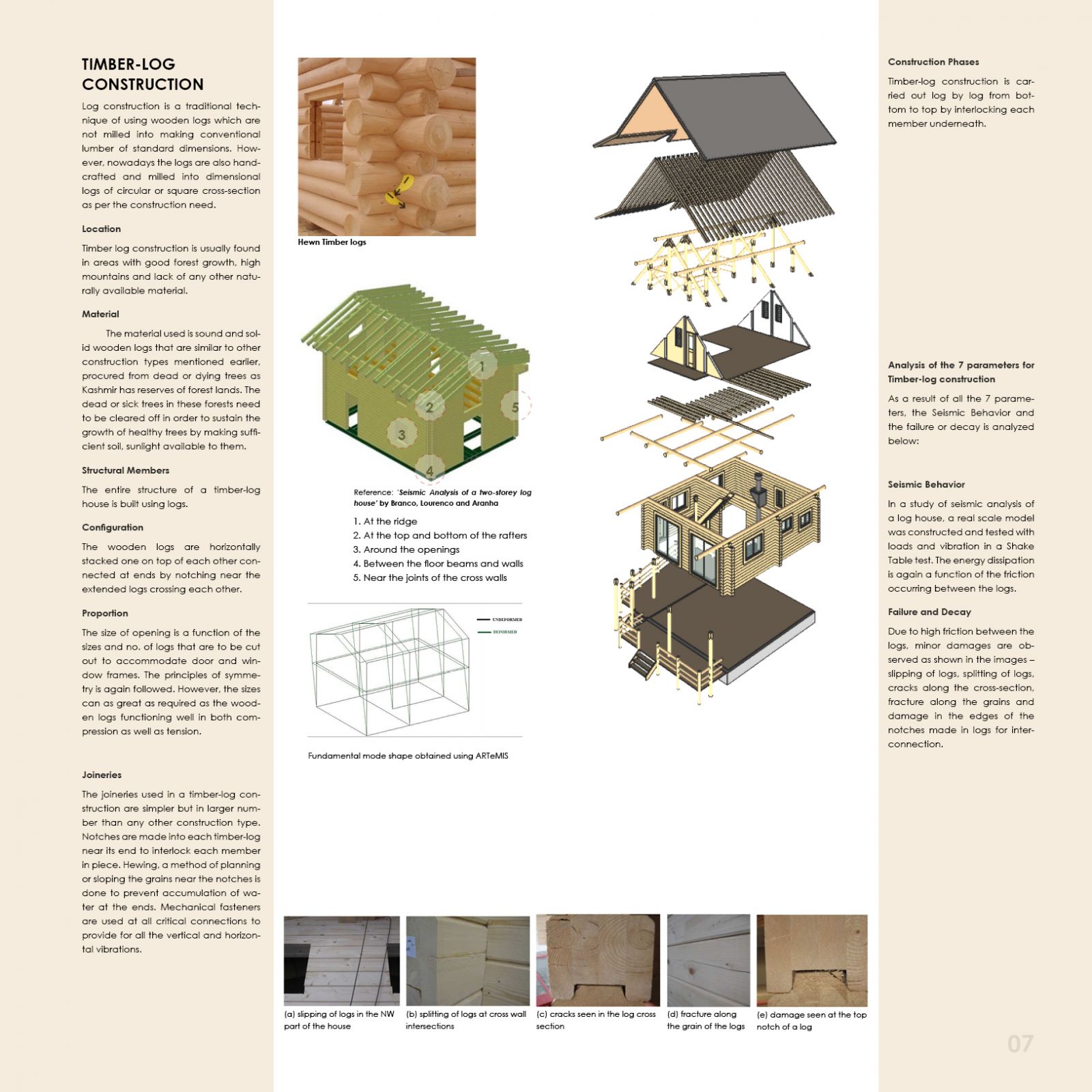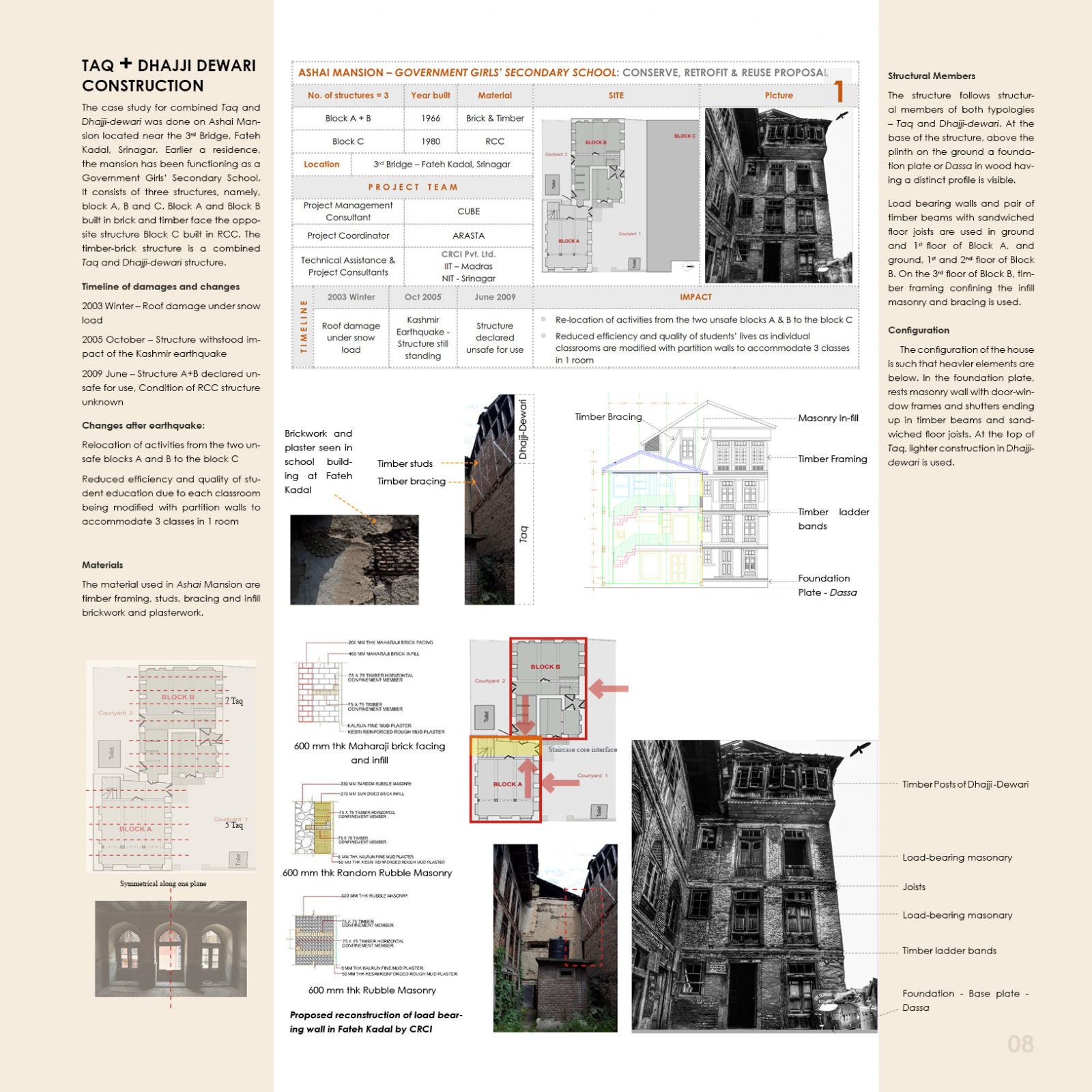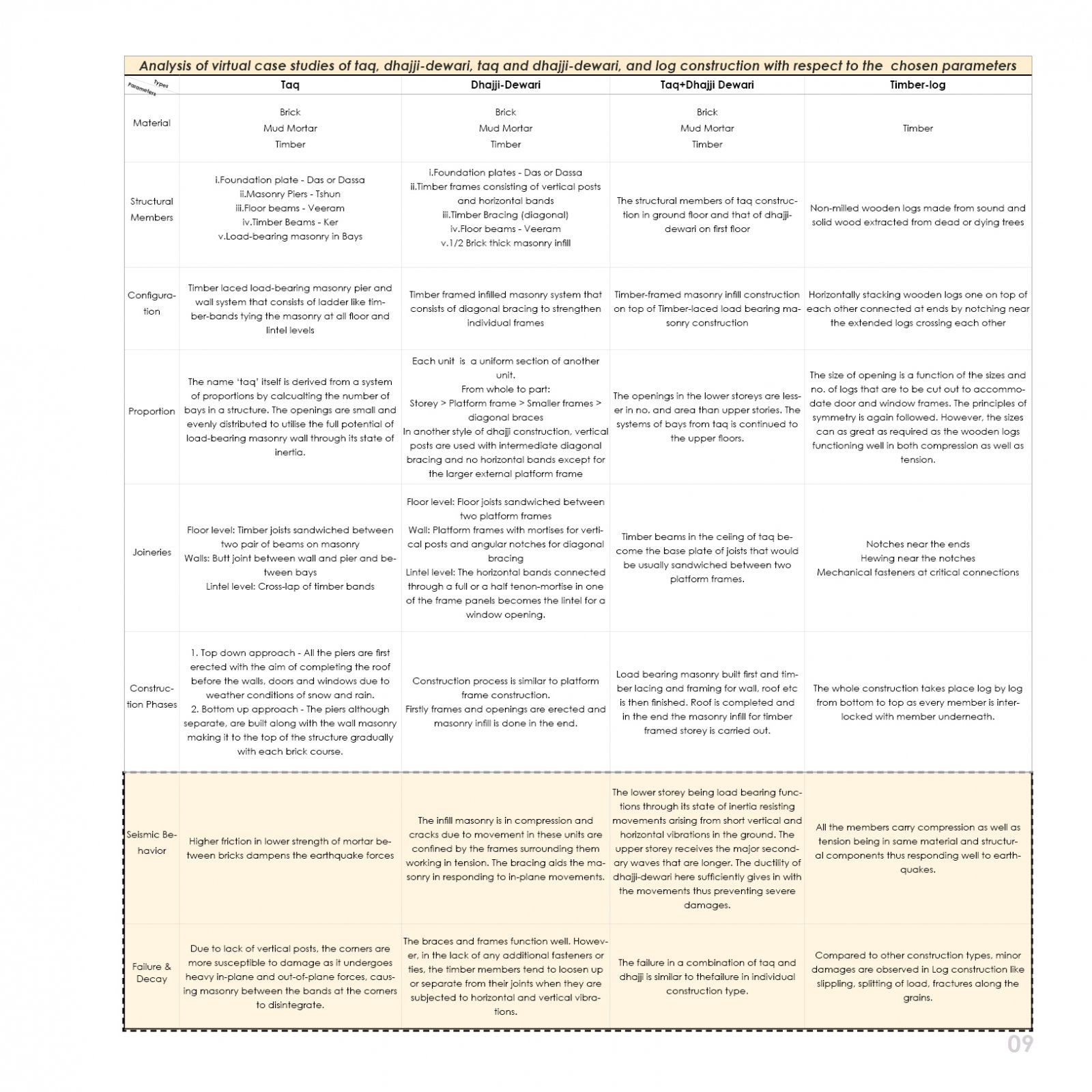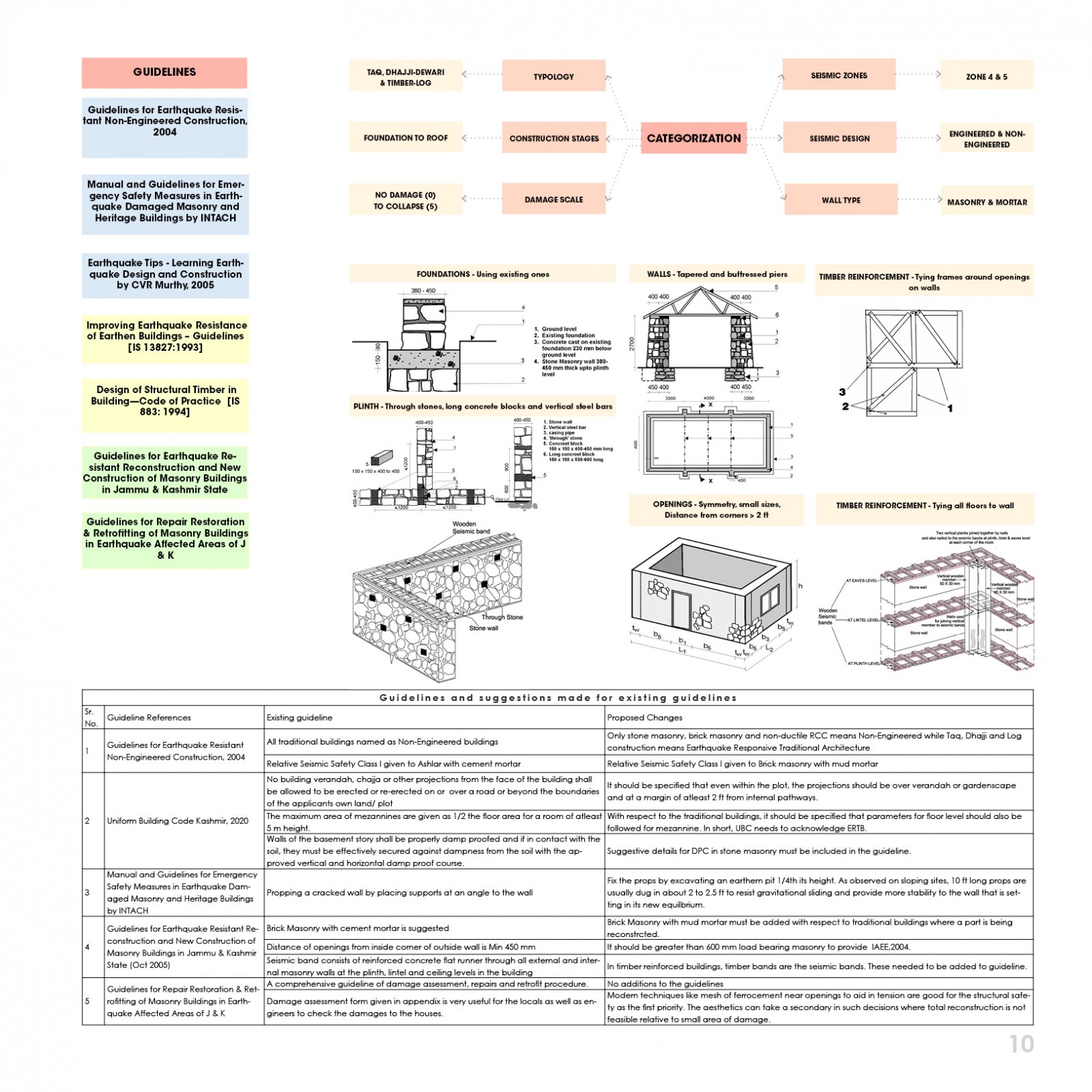Codifying Embedded Knowledge in Kashmir's Built Heritage
- Student CHANDEL NEHA KUMAR SINGH
- Code PG190598
- Faculty Architecture
- Tutor/s Ashna Patel,Sabrina Khan patel
- TA Zeus Pithawalla
The Kashmir region of Jammu and Kashmir falls under seismic zone 5. During the previous earthquakes, millions of houses were severely damaged resulting in great loss of life. As per the ground reports, the concrete houses were observed damaged and only the traditional architecture of Kashmir Valley withstood the seismic forces. Not only are these traditional buildings earthquake responsive but they also contribute to the image and identity of the cultural landscape of Kashmir. However, this landscape is being marred by concrete buildings. And in the run for modernization, the embedded knowledge of the traditional architecture is being forgotten. This research is an attempt to find out the embedded knowledge of the various types of traditional buildings that proved to be earthquake resistant – Taq, Dhajji-Dewari and Timber Log – by carrying out parallel case studies on common parameters of seismic design followed by an overview on existing guidelines and suggestions on adding considerations for these traditional buildings in the codes. The analysis of the case studies with respect to seismic design parameters resulted in finding their interdependencies during the event of an earthquake. The analysis of regional and national building codes resulted in finding a very few traditional building timber elements being in use in codes leading to suggestions for their consideration. The research concludes with a message to make people-friendly earthquake building codes as many home-owners carry out repair tasks on their own which instead of entangling seismic design into non-decipherable codes, ensures that the embedded knowledge of this local seismic culture always stays in circulation across the generations to come. Hence, an approach 'Code to Decode'.
